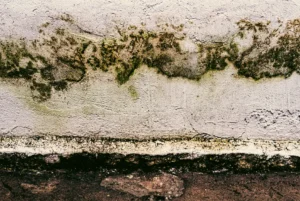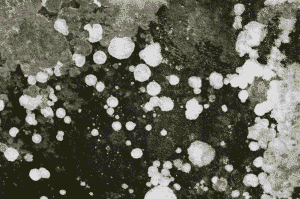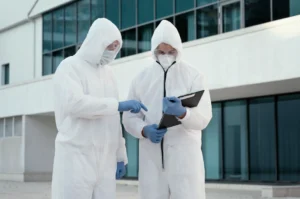Lead exposure is often overlooked, but the effects can be devastating, especially when it comes to older buildings in New York City. If you live in an apartment or house built before 1978, there’s a high chance your home contains lead-based paint, and that’s a serious health risk.
Lead exposure often shows no immediate symptoms, yet it can cause long-term damage, particularly to young children and pregnant individuals.
In this blog, we’ll explore how lead exposure affects your health, who is most at risk, and what you can do to protect yourself and your family, starting with a lead inspection in NYC.
What Is Lead Exposure and How Does It Happen?
Lead is a toxic metal that was once commonly used in paint, pipes, and even gasoline.
In homes built before 1978, lead-based paint was used extensively, particularly in older buildings like those found throughout NYC.
Over time, lead paint deteriorates and turns into dust, which can easily be inhaled or ingested, especially by children, who are more likely to put objects in their mouths or touch contaminated surfaces.
Lead exposure can also occur through contaminated water, particularly in buildings with old plumbing systems that may still contain lead pipes or solder.
The Health Risks of Lead Exposure
Lead exposure is no small matter, and its effects can range from mild symptoms to life-altering health issues.
The Centers for Disease Control and Prevention (CDC) reports that there is no safe level of lead exposure.
Here’s how it impacts different groups:
1. Children
Children under 6 years old are particularly vulnerable to lead poisoning. They are more likely to ingest lead particles from their environment, and their developing brains are more susceptible to the toxic effects. Even small amounts of lead exposure can cause irreversible damage.
Health effects of lead exposure in children include:
- Developmental delays
- Learning disabilities
- Behavioral issues, like irritability or difficulty focusing
- Lower IQ
- Speech and language delays
- Slowed growth
In severe cases, lead poisoning can lead to permanent brain damage, seizures, or even death.
2. Pregnant Women and Unborn Babies
Lead exposure is also dangerous for pregnant women because it can affect the fetus. Lead can cross the placenta and impact the development of the baby’s brain and nervous system. Even low levels of lead exposure during pregnancy can cause:
- Premature birth
- Low birth weight
- Developmental and learning disabilities in the child
3. Adults
While children are most at risk, adults aren’t immune to the health risks of lead exposure. The effects may not be as immediately obvious, but they can still be significant.
Chronic lead exposure can cause:
- High blood pressure
- Memory loss
- Headaches
- Joint and muscle pain
- Mood disorders
- Fertility issues
- Kidney damage
Also Read: How to Prepare for a Lead Inspection: Tips for Homeowners
How to Know If Your Home Has Lead-Based Paint
If your home was built before 1978, it’s crucial to determine whether lead-based paint is present. The most common way to detect lead is through professional testing, like a lead inspection in NYC.
But here are some signs that may suggest lead-based paint is present:
- Peeling, cracking, or chipping paint: Lead paint deteriorates over time and can easily become airborne as dust or chips.
- Paint on windowsills, doors, or baseboards: These are high-friction areas where lead paint is more likely to deteriorate.
- Recent renovation: If you’ve recently renovated your home and noticed dust, it could be from lead paint.
While these signs can point to the presence of lead, the only way to be sure is to schedule a lead inspection. Professional inspectors use tools like XRF analyzers to detect lead without damaging your walls, providing you with accurate results.
What You Can Do to Protect Your Health and Your Family
The good news is that you don’t have to live in fear of lead exposure.
There are concrete steps you can take to protect yourself, your family, and your home.
1. Schedule a Lead Inspection in NYC
If you live in an older building, the first step is to schedule a professional lead inspection. A certified lead inspector will assess your home for lead paint, dust, and any potential hazards. This inspection is crucial for peace of mind and for ensuring you are taking steps to safeguard your health.
2. Address Lead Paint Issues Promptly
If lead paint is found in your home, it’s essential to handle the situation quickly and safely. You may not need to remove the paint entirely. Often, encapsulation (sealing the lead paint with a special coating) is a safer, more cost-effective solution.
If removal is necessary, hire a certified lead abatement professional who is trained to safely remove lead paint without contaminating the rest of your home.
3. Prevent Exposure to Lead Dust
If you live in a home with lead paint, make sure to:
- Clean regularly using wet cleaning methods to avoid spreading lead dust.
- Keep your children away from areas with peeling paint.
- Make sure your plumbing and water systems are safe. If your pipes are old, consider having them replaced or tested for lead.
Protect Your Family Today!
Take action now before the issue worsens. Our certified experts at NYC Lead & Mold are ready to help you with thorough lead inspections in NYC and safe remediation options. Schedule your lead inspection today!
You can also check the Sitemap.






